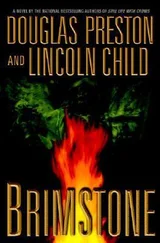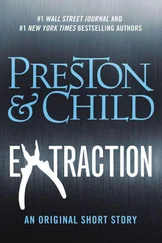Douglas Preston - Reliquary
Здесь есть возможность читать онлайн «Douglas Preston - Reliquary» весь текст электронной книги совершенно бесплатно (целиком полную версию без сокращений). В некоторых случаях можно слушать аудио, скачать через торрент в формате fb2 и присутствует краткое содержание. Жанр: Старинная литература, на русском языке. Описание произведения, (предисловие) а так же отзывы посетителей доступны на портале библиотеки ЛибКат.
- Название:Reliquary
- Автор:
- Жанр:
- Год:неизвестен
- ISBN:нет данных
- Рейтинг книги:3 / 5. Голосов: 1
-
Избранное:Добавить в избранное
- Отзывы:
-
Ваша оценка:
- 60
- 1
- 2
- 3
- 4
- 5
Reliquary: краткое содержание, описание и аннотация
Предлагаем к чтению аннотацию, описание, краткое содержание или предисловие (зависит от того, что написал сам автор книги «Reliquary»). Если вы не нашли необходимую информацию о книге — напишите в комментариях, мы постараемся отыскать её.
Reliquary — читать онлайн бесплатно полную книгу (весь текст) целиком
Ниже представлен текст книги, разбитый по страницам. Система сохранения места последней прочитанной страницы, позволяет с удобством читать онлайн бесплатно книгу «Reliquary», без необходимости каждый раз заново искать на чём Вы остановились. Поставьте закладку, и сможете в любой момент перейти на страницу, на которой закончили чтение.
Интервал:
Закладка:
D’Agosta looked at the jottings, frowning. “Knives of flint?”
Hayward shrugged. “Can’t even be sure it’s what she said. But it’s our best guess.”
“Thanks,” D’Agosta said, thrusting the notebook into his pocket and walking away quickly. A moment later he stopped, as if recollecting something. “Doctor,” he said, “Captain Waxie will probably be here in the next hour or so.”
A black look crossed Wasserman’s features.
“But I assume Mrs. Muñoz is too exhausted to see anybody. Am I right? If the Captain gives you any trouble, refer him to me.”
For the first time, Wasserman broke into a smile.
= 38 =
WHEN MARGO ARRIVED at the Anthropology conference room around ten that morning, it was obvious that the meeting had already been underway for some time. The small conference table in the center of the lab was littered with coffee cups, napkins, half-eaten croissants, and breakfast wrappings. In addition to Frock, Waxie, and D’Agosta, Margo was surprised to see Chief Horlocker, the heavy braid on his collar and hat looking out of place among all the equipment. Resentment hung in the air like a heavy pall.
“You expect us to believe that the killers are living in those Astor Tunnels of yours?” Waxie was saying to D’Agosta. At the sound of her entrance, he turned with a frown. “Glad you could make it,” he grumbled.
Hearing this, Frock looked up, then rolled back to make room for her at the table, a relieved look on his face. “Margo! At last. Perhaps you can clear things up. Lieutenant D’Agosta here has been making some unusual claims about your discovery at Greg’s lab. He tells me you’ve been doing some, ah, additional research in my absence. If I didn’t know you as well as I do, my dear, I’d think that—”
“Excuse me!” D’Agosta said loudly. In the abrupt silence, he looked around at Horlocker, Waxie, and Frock in turn.
“I’d like Dr. Green to review her findings,” he said in a quieter tone.
Margo took a seat at the table, surprised when Horlocker made no response. Something had happened, and, though she couldn’t be sure, it seemed obvious that it had to do with the subway massacre the night before. She considered apologizing for her lateness and explaining that she’d remained at her lab until three that morning, but decided against it. For all she knew, Jen, her lab assistant, was still at work down the hall.
“Just a minute,” Waxie began. “I was saying that—”
Horlocker turned to him. “Waxie, shut up. Dr. Green, I think you’d better tell us exactly what you’ve been doing and what you’ve discovered.”
Margo took a deep breath. “I don’t know what Lieutenant D’Agosta has told you already,” she began, “so I’ll be brief. You know that the badly deformed skeleton we found belongs to Gregory Kawakita, a former curator here at the Museum. He and I were both graduate assistants. After leaving the Museum, Greg apparently ran a series of clandestine laboratories, the last one being down in the West Side railyards. My examination of the site turned up evidence that, before his death, Greg was manufacturing a genetically engineered version of Liliceae mbwunensis .”
“And that’s the plant the Museum Beast needed to survive?” Horlocker asked. Margo listened for a sarcastic edge to his voice, but could not detect one.
“Yes,” she replied. “But I now believe that this plant was more than just a food source for the beast. If I’m right, the plant contains a reovirus that causes morphological change in any creature that ingests it.”
“Come again?” Waxie said.
“It causes gross physical alteration. Whittlesey, the leader of the expedition that sent the plants back to the Museum, must have ingested some himself—perhaps unwittingly, or perhaps against his will. We’ll never know the details. But it seems clear now that the Museum Beast was, in fact, Julian Whittlesey.”
There was a sharp intake of breath from Frock. Nobody else spoke.
“I know this is difficult to believe,” Margo said. “It certainly wasn’t the conclusion we came to after the beast was destroyed. We thought the creature was simply some evolutionary aberration that needed the plants to survive. We assumed that, when its own ecological niche was destroyed, it followed the only remaining plants back to the Museum. They’d been used as packing fibers for the artifacts that were crated up and shipped back to New York. Then later, when the beast couldn’t get the plants, it ate the nearest available substitute: the human hypothalamus, which contains many of the same hormones found in the plant.
“But I now think we were wrong. The beast was a grossly malformed Whittlesey. I also think Kawakita stumbled on the true answer. He must have found a few specimens of the plant and begun altering them genetically. I guess he believed he’d been able to rid the plant of its negative effects.”
“Tell them about the drug,” D’Agosta said.
“Kawakita had been producing the plant in large quantities,” Margo said. “I believe that a rare designer drug—didn’t I hear you call it ‘glaze’?—is derived from it, though I can’t be sure. It probably has potent narcotic or hallucinatory properties in addition to its viral payload. Kawakita must have been selling it to a select group of users, probably to raise money for more research. But he was also testing the effectiveness of his work. Clearly, he ingested the plant himself at some point. That’s what accounts for the bizarre malformations to his skeletal structure.”
“But if this drug, or plant, or whatever, has such terrible side effects, why would this Kawakita take it himself?” Horlocker asked.
Margo frowned. “I don’t know,” she said. “He must have continued perfecting new strains. I assume he felt he’d bred out the negative elements of the drug. And he must have seen some beneficial aspect to it. I’m conducting tests on the plants I found in his laboratory. We’ve introduced them into various test animals, including white mice and some protozoans. My lab assistant, Jennifer Lake, is going over the results now.”
“Why wasn’t I informed—?” Waxie began.
D’Agosta rounded on him. “When you finally get around to checking your in box and listening to your messages, you’ll find that you were informed of every goddamn step.”
Horlocker held up his hand. “Enough. Lieutenant, we all know that mistakes have been made. We’ll leave the recriminations for later.”
D’Agosta sat back. Margo had never seen him so angry. It was almost as if he blamed everyone in the room—himself included—for the subway tragedy.
“Right now, we’ve got an unbelievably serious situation on our hands,” Horlocker continued. “The mayor’s on my back, screaming for action. And now, with this massacre, the governor’s joined in.” He wiped his brow with a damp handkerchief. “All right. According to Dr. Green here, we’re dealing with a group of drug addicts, supplied by this scientist, Kawakita. Only now, Kawakita is dead. Maybe their supplies have run out, or maybe they’ve gone wild. They’re living deep underground, in these Astor Tunnels D’Agosta was describing, abandoned long ago because of flooding. And they’re going mad with need. When they can’t get the drug, they’re forced to eat the human brain. Just like the Mbwun beast. Hence, all the recent killings.” He looked around, glaring. “Supporting evidence?”
“The Mbwun plants we found at Kawakita’s lab site,” Margo said.
“The bulk of the killings parallel the route of the Astor Tunnels,” D’Agosta added. “Pendergast showed that.”
“Circumstantial.” Waxie snorted.
“How about testimony of countless homeless, all stating the Devil’s Attic has been colonized?” Margo said.
Читать дальшеИнтервал:
Закладка:
Похожие книги на «Reliquary»
Представляем Вашему вниманию похожие книги на «Reliquary» списком для выбора. Мы отобрали схожую по названию и смыслу литературу в надежде предоставить читателям больше вариантов отыскать новые, интересные, ещё непрочитанные произведения.
Обсуждение, отзывы о книге «Reliquary» и просто собственные мнения читателей. Оставьте ваши комментарии, напишите, что Вы думаете о произведении, его смысле или главных героях. Укажите что конкретно понравилось, а что нет, и почему Вы так считаете.











